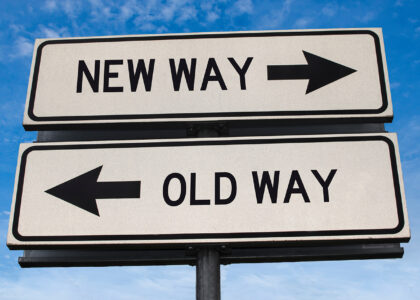Henry Stewart recently hosted the DAM for Healthcare Day virtual conference, and I was honored to be the conference chair. We had some great sessions and I wanted to share some of my takeaways.
Imagine, if you will (cue Twilight Zone music), a typical large healthcare organization storing and managing digital assets – marketing content, branding, patient and health professionals’ training materials, videos, brochures, etc. With many different tools and applications being used, each in their own silo, and little communication between the different teams. Assets were being duplicated or re-created, the DAM and search front end were used randomly and the investment in all the technology and effort was being wasted. Your new job is to manage that decentralized, disorganized publishing model and create a unified Digital Asset Management system.
This is one of the use case stories from the presentations. Like many use cases, the starting point seems overwhelming. Unlike many webinar presentations, where problems and solutions are discussed in an abstract, theoretical way, these sessions featured a common-sense, practical approach by experienced and successful practitioners. Whether it’s too many DAM silos, managing thousands of employees with access to the DAM, or implementing a governance process, there were common themes in how they made things better.
These key themes are simple and effective. That doesn’t mean it’s easy…
First is a plan. Even if you’re thrust into the role, you start by figuring out a plan. You must know and understand the landscape, and clearly define not only the problems, but the terminology so everyone is on the same page.
The pros use their experience to create goals. What does success look like?
The main theme was communication. There are many stakeholders, users, partners, teams, departments, and on and on. These systems are made up of people, processes, and technology, creating unique, interdependent environments. Communication is the oil that reduces friction, and more is always better. Communication involves hearing, listening, understanding, and then explaining and training up and down the line the goals, objectives, and work to be done. Effective and purposeful communication harmonizes and aligns people, processes, and technology.
If you want to learn more from some very smart pros, I invite you to view these sessions. They are available on YouTube.
Critical Role in Today’s Healthcare
Jerrod Gingras, Real Story Group
Dam Harmonization and Getting to the Source of Truth
Amy Davis, DAM & Taxonomy Manager, Medtronic
Chaos to Calm: Mastering Healthcare Workflows with DAM Panel Discussion
Charlene Lewis, Moderator
Katie Simpson, CoLab – Publicis Health Media
JoAnn Genzanto, Merck
Vikas Haridas, Comwrap Reply
Consent and Authorization: Improving Governance for Non-diagnostic Media
Annie Erdmann, Managing Media Asset Librarian, Mayo Clinic






